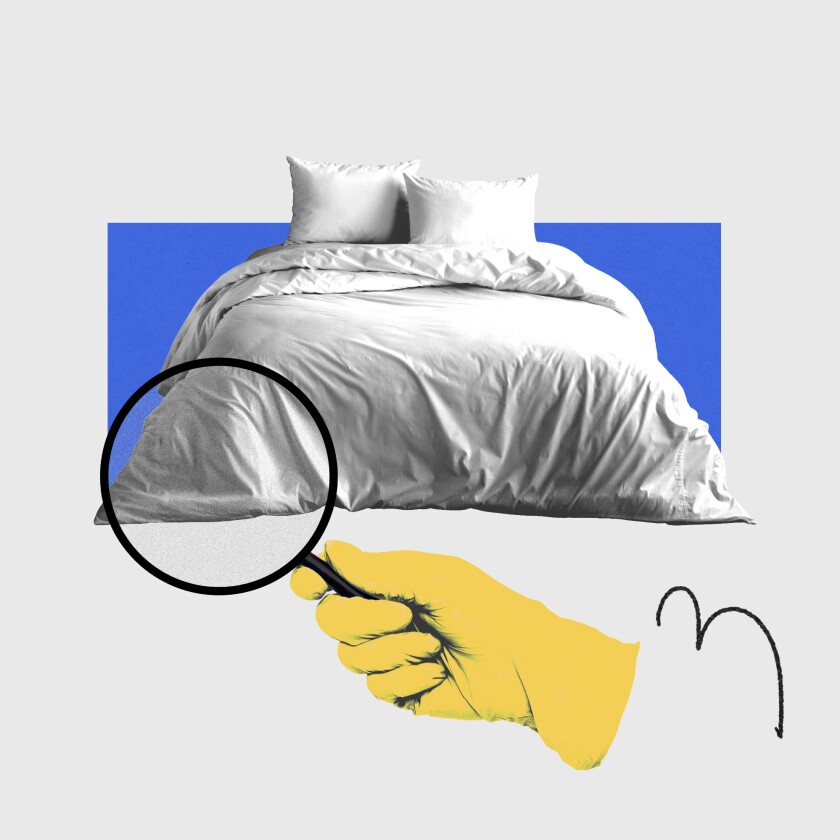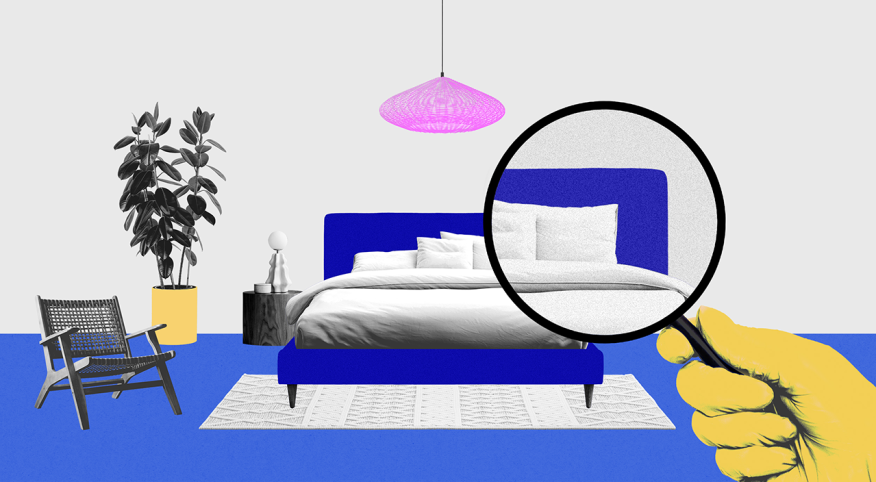Are you a woman who likes to travel? Do you enjoy swapping travel-related tips and tricks? Do you want to find a travel buddy or two? Then join our closed Facebook group, The Ethel On-The-Go, today! You'll love it.
If you’re an avid traveler, you’re probably already wary of high-touch surfaces in hotel rooms (think: remote control, light switches and the coffee maker). But some lesser-known areas also harbor a slew of allergens, mold and other nasties you’d rather not be exposed to. “While most of the germs you come into contact with daily cause mild or self-limiting illness, no one wants to increase their risk of illness, especially while on vacation,” says Kelly Reynolds, a microbiologist at the University of Arizona College of Public Health.
We’re highlighting five unexpected yet germ-laden hotel room areas to be wary of:
1. Fabric headboards
If your hotel room has a fabric headboard, it may be a red flag. According to Reynolds, any fabric surface, including a headboard, can absorb moisture from the air along with sweat from skin contact, creating a ripe environment for mold accumulation and germs. “Skin flakes and dust may also accumulate over time, providing the perfect environment to sustain dust mites,” she adds. Unlike a hard surface that can be sanitized, soft surfaces are difficult to clean and, thus, can be germ hotbeds.
2. Desks
You may not consider the desk a high-touch surface, but Reynolds says they’re often a collection point for germ-harboring items like dirty clothes, shoes, purses, backpacks and cell phones. Not to mention, textiles that are common to desktops, such as wood, may be more difficult to disinfect without damaging the surface. “As such, these sites might not be as rigorously cleaned,” says Reynolds. “Desks can also harbor any spilled food or drinks, which provides a food source for bacteria and mold to grow."
3. Carpets

Like upholstered items, carpets are soft surface prone to harboring germs and are difficult to clean. “We track a lot of germs onto carpets via dirty shoes, roller bags, spilled drinks and food, and even pets,” says Reynolds, adding that bodily oils, fluids, skin cells and hair are constantly shedding and settling on these types of surfaces. In general, tile floors are easier to clean and can better withstand water and disinfecting chemicals. Just keep in mind that tile grout, however, may be difficult to fully disinfect. “These porous sites commonly harbor visible, growing mold colonies,” says Reynolds. To minimize exposure to carpet germs, avoid going barefoot and opt for slippers. Or try placing towels in high-traffic areas of the hotel room.
4. Ice buckets and drinking glasses

While standards for ensuring safe drinking glasses include using a sanitizer or high-heat dishwasher temperatures, Reynolds says hidden camera investigations have shown that hotel staff sometimes only rinse or wipe drinking glasses, skipping proper sanitizing protocols. Generally speaking, ice buckets and drinking glasses are often overlooked when it comes to sanitizing between hotel guests, so the best practice is to wash them yourself or use disposable cups to avoid contaminating your ice and drinks.
5. Heavy drapes and comforters

Heavy drapes, bedspreads and comforters can be additional sources of germs in hotel rooms. “These heavy fabrics, by nature, make them more difficult to launder, and similar to other fabric or upholstered surfaces, they accumulate mold, germs, dust and other allergens over time,” notes Reynolds. “Bed linens not washed between guests [may] contain dried human bodily secretions, such as urine, semen, blood, saliva and dead skin.” While you may not be able to change certain permanent decor in your hotel room, Reynolds says that stripping the bed of comforters upon arrival and practicing good personal hygiene are proactive defenses that you can control.
Tips for hotel room cleanliness
You can ask the hotel if they offer an air purifier, as these can help reduce moisture levels, dust and allergens in the air, says Reynolds, who explains that your best defense is to wash your hands, as many of the germs found in hotel bathrooms (and surviving on contaminated room surfaces) are spread via surface to hands to mucus membranes of the face, including the eyes, nose and mouth.
It’s important to exercise proper cleanliness while staying in a hotel room, like traveling with your own disinfecting wipes and giving the room a quick wipe-down upon arrival. Also, be a good citizen for the next guest by keeping dirty shoes, clothes and backpacks off desk surfaces, couches and beds.
Do you wipe down surfaces when staying at a hotel? Let us know in the comments below.









